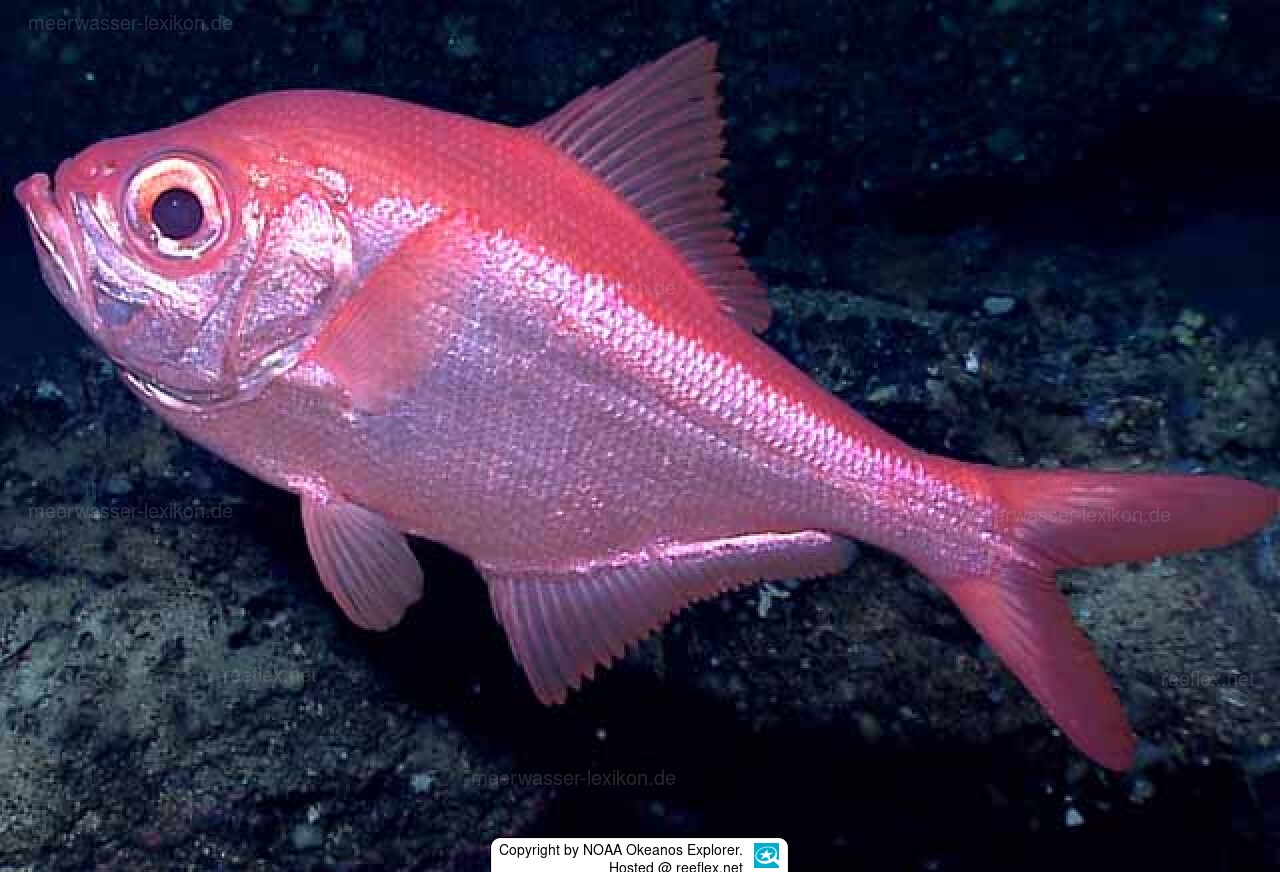Info
Beryx decadactylus belongs to the family of slimeheads, typical for this species is a high, laterally flattened body, a large head with a huge mouth and large eyes, and powerful spiny rays in the fins.
Juvenile animals also have strong spines on the head.
There are various different data on the depth distribution, as well as on the weight of the fish.
The specific name Decadactylus is derived from the Latin deci- (= ten) and the Greek daktylos (= finger) and refers to the pelvic fins, which have 10 soft rays in this species.
Synonyms
Actinoberyx jugeati Roule, 1923
Actinoberyx longipinnis (Barnard, 1925)
Actinoberyx pozzi Nani, 1958
Beryx borealis Düben & Koren, 1846
Beryx delphini Valenciennes, 1833
Beryx dodecadactylus Cuvier, 1829
Beryx longipinnis Barnard, 1925
Zum Foto mit der Koralle : Gemeinfrei
Beryx decadactylus (alfonsino) schwebt um eine große Lophelia-Koralle. Viele Fische nutzen den Lebensraum der tiefen Korallen in ähnlicher Weise wie Fische in flachen Korallensystemen, und dies ist ein wichtiger Schwerpunkt unserer Forschung. Bild-ID: expl0431, Reise ins Innere des Ozeans - Erforschung der Meere mit NOAA Collect Ort: North Carolina Kontinentalabhang Fotograf: Dr. Ken Sulak, USGS Bildnachweis: Life on the Edge 2004 Expedition: NOAA Büro für Ozeanforschung
Juvenile animals also have strong spines on the head.
There are various different data on the depth distribution, as well as on the weight of the fish.
The specific name Decadactylus is derived from the Latin deci- (= ten) and the Greek daktylos (= finger) and refers to the pelvic fins, which have 10 soft rays in this species.
Synonyms
Actinoberyx jugeati Roule, 1923
Actinoberyx longipinnis (Barnard, 1925)
Actinoberyx pozzi Nani, 1958
Beryx borealis Düben & Koren, 1846
Beryx delphini Valenciennes, 1833
Beryx dodecadactylus Cuvier, 1829
Beryx longipinnis Barnard, 1925
Zum Foto mit der Koralle : Gemeinfrei
Beryx decadactylus (alfonsino) schwebt um eine große Lophelia-Koralle. Viele Fische nutzen den Lebensraum der tiefen Korallen in ähnlicher Weise wie Fische in flachen Korallensystemen, und dies ist ein wichtiger Schwerpunkt unserer Forschung. Bild-ID: expl0431, Reise ins Innere des Ozeans - Erforschung der Meere mit NOAA Collect Ort: North Carolina Kontinentalabhang Fotograf: Dr. Ken Sulak, USGS Bildnachweis: Life on the Edge 2004 Expedition: NOAA Büro für Ozeanforschung







 NOAA Okeanos Explorer
NOAA Okeanos Explorer



